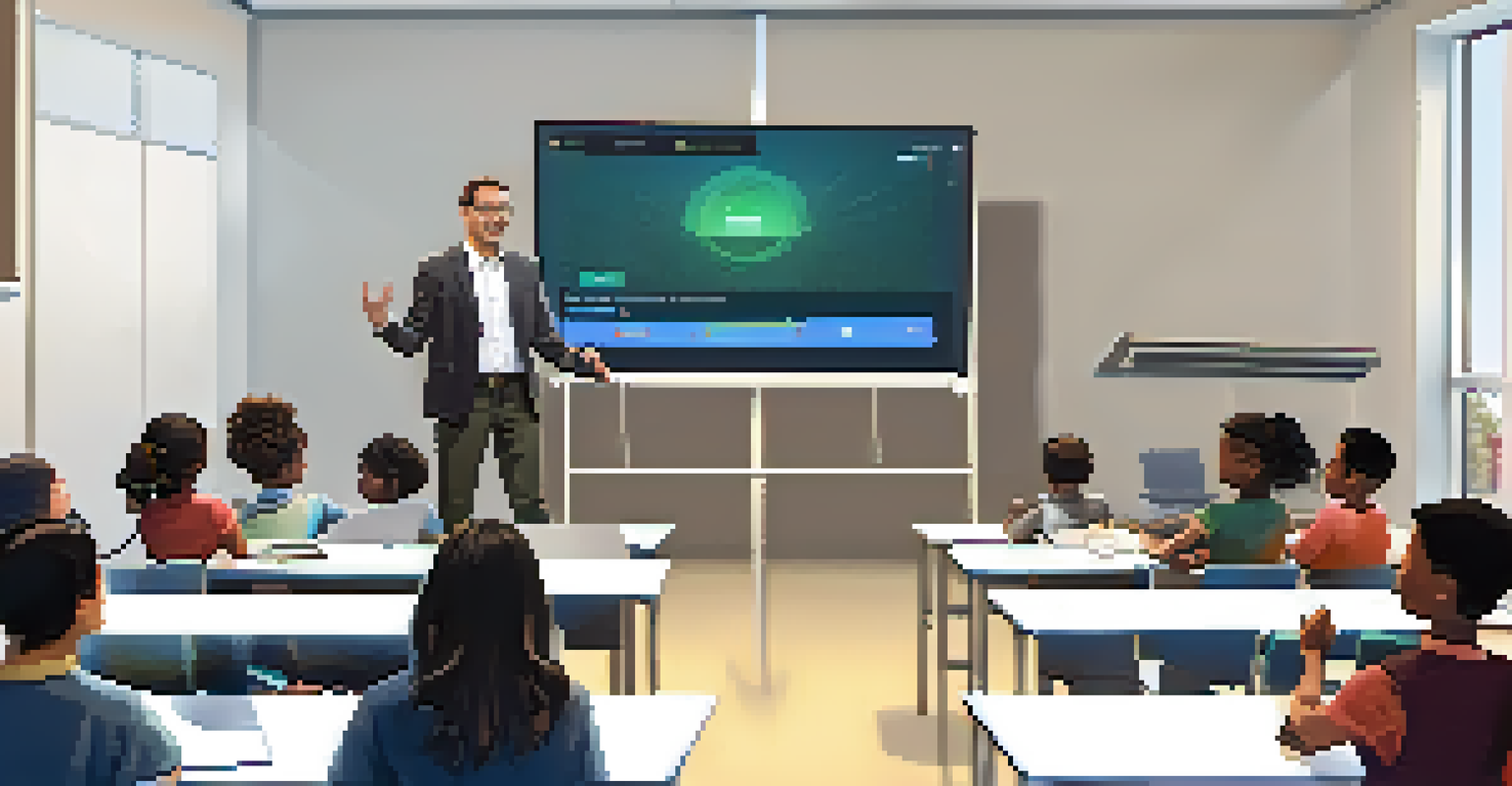Effective Communication in Adult Learning Environments

Understanding the Importance of Communication in Adult Learning
Effective communication is the backbone of any learning environment, especially for adults. Unlike younger learners, adults bring a wealth of experience and knowledge to the table, making communication crucial for engagement and understanding. It not only facilitates learning but also builds trust and rapport between instructors and learners.
The single biggest problem in communication is the illusion that it has taken place.
In adult learning, communication goes beyond just delivering information. It's about creating a dialogue that respects the learners' perspectives and encourages participation. This two-way interaction helps learners feel valued, which can significantly enhance their motivation and retention of information.
Furthermore, effective communication can help identify and address potential learning barriers. By fostering an open environment, instructors can better understand the unique needs of adult learners, leading to tailored approaches that resonate with their experiences and expectations.
Adapting Communication Styles for Adult Learners
Every adult learner is different, and understanding their preferred communication styles is key. Some may respond better to visual aids, while others might prefer verbal explanations or hands-on activities. By adapting your communication style to meet these preferences, you can enhance comprehension and engagement.

For example, if a learner is particularly visual, incorporating infographics or videos can make complex concepts much easier to grasp. On the other hand, fostering group discussions can help auditory learners articulate their thoughts and deepen their understanding. Recognizing these differences allows instructors to create a more inclusive learning atmosphere.
Communication Fuels Adult Learning
Effective communication builds trust and engagement, essential for adult learners who bring diverse experiences to the classroom.
Moreover, being flexible with communication methods can also help accommodate different life experiences and backgrounds. This adaptability ensures that all learners feel respected and understood, paving the way for a more fruitful educational experience.
Building a Safe Learning Environment for Open Dialogue
Creating a safe learning environment is essential for effective communication. When adult learners feel safe to express their thoughts, questions, and concerns, it fosters an atmosphere of trust and respect. This can be achieved by establishing ground rules that promote respectful dialogue and active listening.
Tell me and I forget, teach me and I remember, involve me and I learn.
Instructors can encourage participation by using icebreakers or small group discussions to help learners connect with each other. This not only alleviates anxiety but also promotes a sense of community, making learners more willing to share their ideas and experiences. As relationships develop, so does the richness of the conversation.
Additionally, acknowledging and valuing contributions from all learners reinforces their confidence. When individuals see that their input is appreciated, they’re more likely to engage actively in discussions, leading to deeper learning and collaboration.
Encouraging Active Listening Among Adult Learners
Active listening is a vital skill in adult education, as it ensures that learners truly understand and engage with the material. Instructors can model active listening by summarizing what learners say and asking clarifying questions. This not only validates the speaker but also encourages others to listen attentively.
Encouraging learners to practice active listening can enhance peer interactions. By teaching techniques like paraphrasing or reflecting back what others have said, learners can develop a deeper understanding of diverse perspectives. This practice not only improves communication but also fosters empathy and respect in the learning environment.
Adapt to Learner Preferences
Recognizing and adapting to the different communication styles of adult learners enhances comprehension and fosters inclusivity.
Furthermore, active listening helps to create a feedback loop where learners feel their voices matter. When individuals see that their thoughts lead to meaningful discussions, they are more likely to engage in the learning process, making the entire experience more enriching.
Utilizing Technology to Enhance Communication
In today’s digital age, technology plays a significant role in enhancing communication in adult learning environments. Platforms like Zoom or Google Meet can facilitate real-time discussions, while learning management systems can provide forums for asynchronous conversations. These tools can bridge gaps, especially for remote learners.
Moreover, using multimedia resources such as videos, podcasts, or interactive presentations can cater to various learning styles and preferences. For instance, a visual learner might benefit from a video tutorial, while an auditory learner might prefer a podcast. Leveraging technology allows instructors to create a more dynamic and engaging curriculum.
However, it’s important to ensure that technology doesn’t become a barrier. Providing clear instructions on how to use these tools gives all learners the confidence to participate fully, ensuring that communication remains effective and inclusive.
The Role of Feedback in Effective Communication
Feedback is a crucial element in the communication process, especially in adult learning. Constructive feedback helps learners understand their strengths and areas for improvement, encouraging a growth mindset. Instructors should provide timely and specific feedback to guide learners on their educational journey.
Moreover, fostering a culture of feedback among peers can enhance learning experiences. Encouraging learners to give and receive feedback from each other not only builds communication skills but also cultivates a supportive learning community. This collaborative approach allows for diverse insights and shared learning.
Feedback Drives Growth and Trust
Constructive feedback is vital for developing a growth mindset and encourages a supportive learning environment among peers.
Additionally, it’s vital that feedback is framed positively. Highlighting what learners did well before discussing areas for improvement can motivate them to strive for success rather than feel discouraged. This balanced approach promotes a continuous learning process and enhances overall communication.
Emphasizing Clear and Concise Messaging
In adult learning environments, clarity is key to effective communication. Instructors should strive to deliver messages in a clear and concise manner, avoiding jargon or overly complex language that might confuse learners. This ensures that information is accessible and easily understood.
For example, when explaining a new concept, breaking it down into simple steps or using relatable examples can help demystify the topic. Analogies can also be powerful tools; comparing a complex idea to a familiar scenario can make it more relatable and digestible for learners.

Moreover, summarizing key points at the end of a session reinforces understanding and retention. This not only helps learners recall important information but also encourages them to engage with the material more actively, making the learning experience more effective.